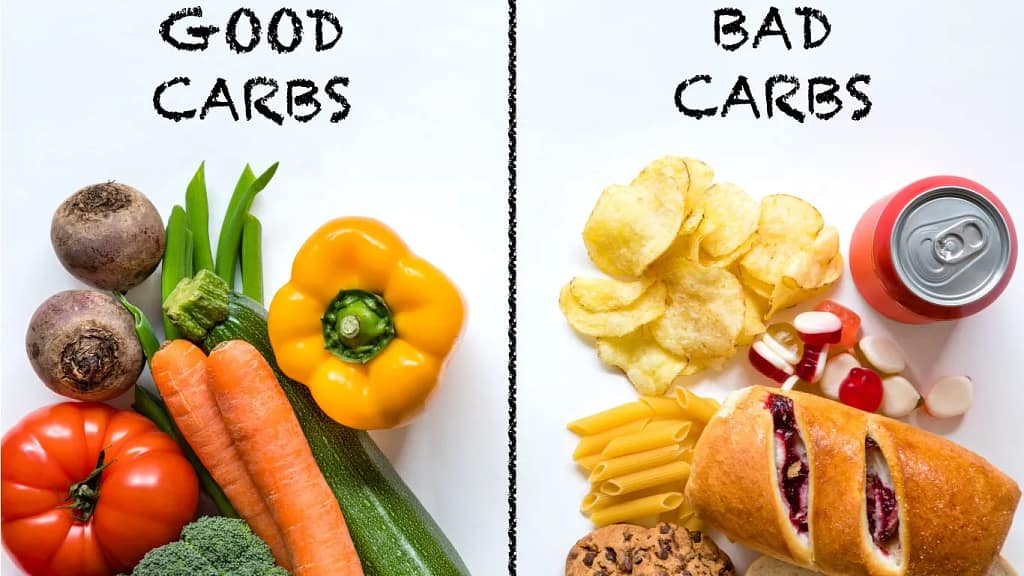Carbohydrates, in the form of carbs found in food, are essential for fueling your pet’s body. Carbohydrates are sugar molecules that animals use to produce energy. Dogs need glucose because they have a higher metabolism than humans, but they also need protein and fat in their diet.
So, in this post, I’ll tell you how many carbs your dog requires. What are the best carbs for your dog and many more?

Table of Contents
ToggleHow To Calculate Carbohydrates In Dog Food
When calculating carbohydrates in dog food, many factors need to be considered. The first thing to consider is the type of carbohydrate in the food. Carbohydrates are classified into three main types: simple, complex, and fibre-rich.
Simple carbohydrates are those that are composed of one or two sugar molecules. These include glucose and fructose, which are found in fruits and vegetables. Complex carbohydrates consist of several sugar molecules linked together.
They can be found in whole grains and some meats. Fibre-rich carbohydrates contain a lot of fibre, which can help keep your dog’s stomach feeling full longer after eating.
To calculate the grams of carbohydrates present in a food, you need to know its weight and how many grams of each type of carbohydrate it contains. To figure out how many grams each type of carbohydrate food has, divide its importance by the number of grams in a single sugar molecule
(2). It will estimate how many complex carbs, fiber-rich carbs, and simple carbs are present in the food.
For example, if a food weighs 2 pounds and has 1 gram of glucose per gram, it would have 1 gram of complex carbs and 0 grams of fiber-rich carbs. If a food weighs 3 pounds and has 2 grams per gram of glucose and fructose, it would have 2 grams of complex carbs (1/3) and 1 gram of fiber-rich carb.
What Is Carbs?
Carbs are a type of nutrient found in fresh and dried foods and pet foods. Carbohydrates provide energy for the body and are essential for a dog’s health. Dogs need carbs to fuel their muscles during exercise, maintain their blood sugar levels, and create energy when eating.
The most common carbs in dog food are grains, such as wheat and corn. Other carbs include sugar beet pulp, potato starch, and rice bran. The amount of carbohydrates in a food reflects the number of carbohydrates a dog can burn.
The recommended daily allowance (RDA) for carbohydrates for adult dogs is 45 grams per day. Puppies should have 50 grams per day.
The Difference Between Carbs And Fat
There is a lot of confusion about carbs and fat in dog food. Carbohydrates are the body’s primary energy source, while fat nourishes and helps keep the body warm. Here’s how to calculate carbs in dog food:
To determine how many grams of carbohydrates are in a given kibble or treat, divide its weight by 4. For example, if a kibble weighed 3 ounces and had 10 grams of carbohydrates, its weight would be divided by 4 to get 2.5 grams of carbohydrates per ounce. Most commercial dog foods contain 12 and 24 grams of carbohydrates per pound, so read the label!
People often ask what counts as a “healthy” amount of carbs for their pet. There is no one-size-fits-all answer to this question since every pup is different, but generally speaking, most dogs should consume around 40–60 grams of carbohydrates per day.
Again, it’s essential to read labels carefully to ensure you’re giving your pet the proper nutrition!
How Much Fat Do You Want Your Dog To Eat
When it comes to feeding your dog, you want to ensure that the food you give them is high in nutritional value, low in calories, and contains the correct type of fat. There are a few things to keep in mind when calculating how much fat to give your dog:
First, consider their activity level. Active dogs need more energy and will require more calories than sedentary dogs.
Second, consider their size. Larger dogs need more calories than smaller ones.
Third, pay attention to the ingredients list. Most foods have a certain amount of fat as one of their main ingredients. However, you don’t want your dog to overeat fat because it can be unhealthy for them. Make sure to read the labels to determine how much fat is in each food you’re considering buying.
Think Of Them As Calories Or Energy.
When you’re buying dog food, be sure to calculate the carbs. Carbohydrates are one of the dog’s three primary energy sources, along with protein and fat. Most dog foods list the number of carbs in each serving, which is also an excellent way to estimate how much your dog is eating in a day. To calculate carbs in dog food, divide the total grams of carbohydrates by 4
What Are Good And Bad Carbs For Dogs?
There are healthy carbs and unhealthy carbs in both human and dog food. Healthy carbs are those that your dog can digest and use for energy. Unhealthy carbs are high in sugar or starches, which can cause weight gain, diabetes, and other health problems.
To figure out which carbs are suitable for your pup, think about their diet before you start measuring. What kinds of ingredients does the food contain? Is it primarily meat-based or plant-based? How many grains are there in it? These factors will help you determine what carbohydrate is best for your pet.
Conclusion
Knowing how many carbs are in dog food can be difficult, especially if you’re unfamiliar with the specific ingredients. Fortunately, there is an easy way to calculate carbs in dog food—subtract fibre from the total number of calories.
For example, if a food contains 30 grams of carbs, divide 30 by 4 to get 10.5. It means that 5% (10.5/30) of the carbohydrate content in this food comes from net carbs—which are essential for dogs to thrive on a ketogenic diet.
FAQs
What Is Considered Low Carb For Dogs?
There isn’t a one-size-fits-all answer to this question, as everyone’s dog is different, so it’s essential to speak to a vet before changing your dog’s diet. Some things that might be low carb for one dog might not be low carb for another.
Some common examples of low-carb dog food include meat-based kibble, cooked vegetables, and small amounts of raw meat or poultry.
What Percentage Of Carbs Should Be In Dog Food?
Feeding your dog a balanced diet that includes proteins, carbs, and vegetables is essential. A good guideline is that 25–30% of the diet should be made up of carbs.
Is Kibble High In Carbs?
There is no one-size-fits-all answer when it comes to dog food. Every dog will have different nutritional needs, and the carb content of kibble can vary based on the dog’s breed, weight, and activity level. That said, most kibble does contain carbs.

